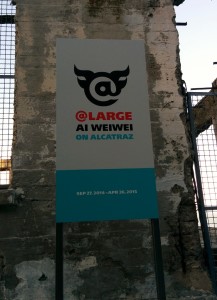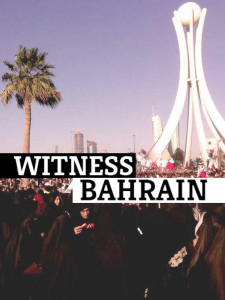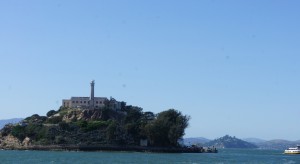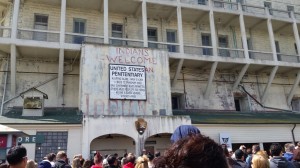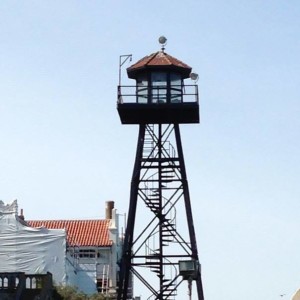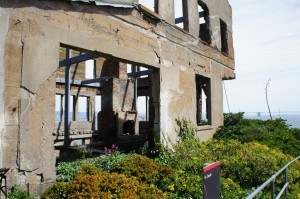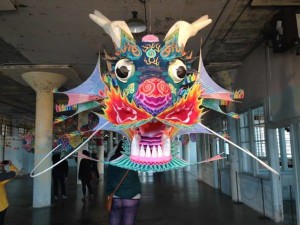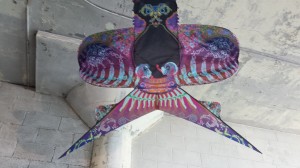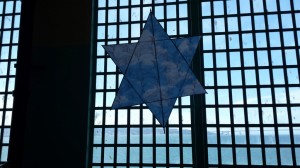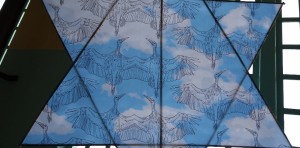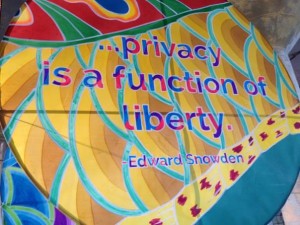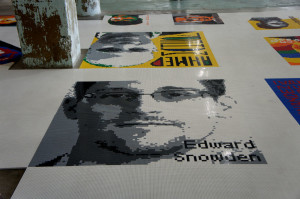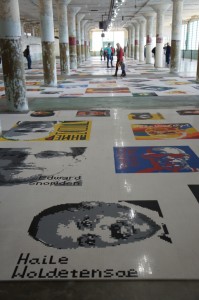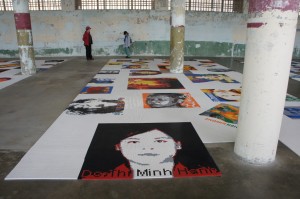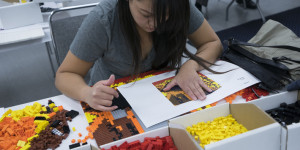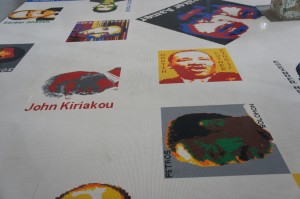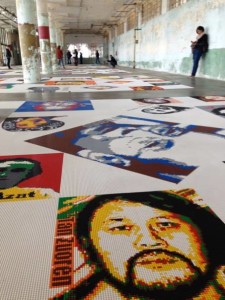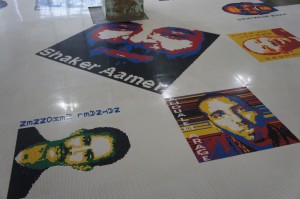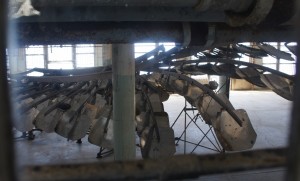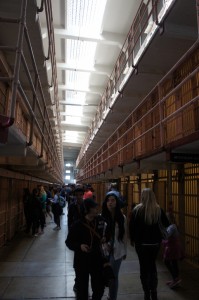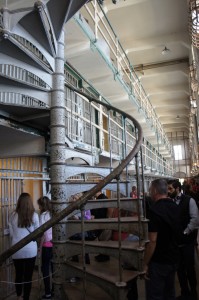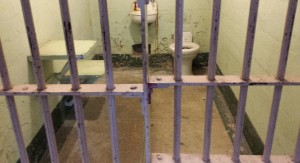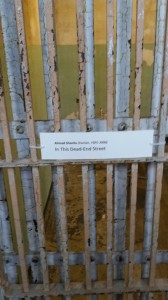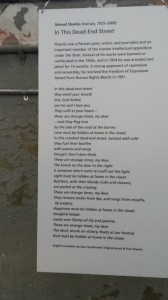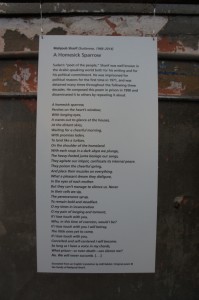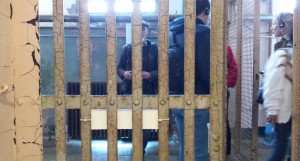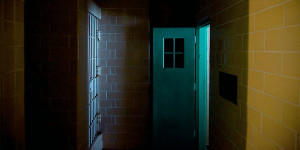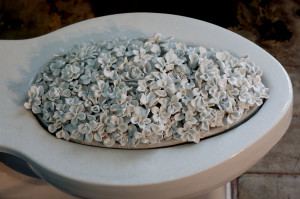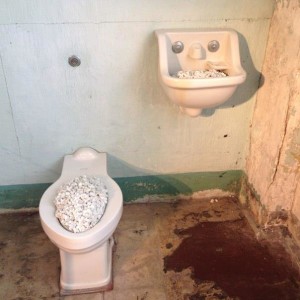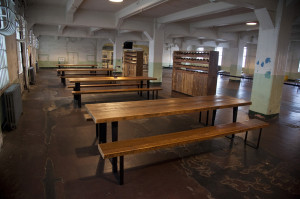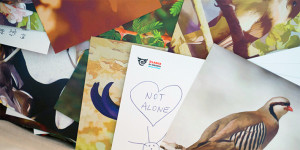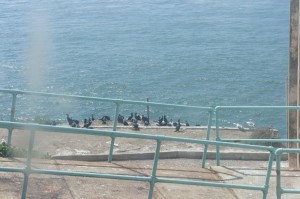@Large Ai Weiwei on Alcatraz
@Large Ai Weiwei on Alcatraz honors people who are detained around the world for political reasons. In some cases, many of us do not even know about these struggles.
For example, Bahrain, which rose up against oppression in 2011, and continues to do so, is not on the world media radar. But fifteen brave activists from that country are included in Ai Weiwei’s homage. Recently, an outstanding documentary film by Jen Marlowe about Bahrain’s ongoing resistence to oppression has been released called Witness Bahrain.
Ai Weiwei was detained for almost three months in 2011, ostensibly for tax evasion, followed by house arrest, and he is still under surveillance and can’t leave the country. He has though, been able to continue to create work all over the world in absentia. In one venue at the Venice Biennale in 2013 he installed a group of six boxes each five feet high, the measurements of his cell, and recreated inside of them the repressive experience of detention which invades every aspect of daily life. Reading Orange is the New Black by Piper Kerman gave me insights into that dehumanizing process survived only by the strength of the human spirit. Mahamedou Ould Slahi, still in detention in Guantanamo, details the torture he survived in the incredible Guantanamo Diary Another recent publication that describes both revolution and detention as well as torture is Diaries of an Unfinished Revolution, Voices from Tunis to Damascus.
As we approach Alcatraz Island on the ferry, full of tourists who have no idea of the installation, we see its present and its past. You first see “Indians Welcome” behind the sign for the penitentiary from the 1969 – 71 occupation led by Mohawk activists.
A surveillance tower still stands, but most of the buildings themselves, are now in ruins. They were occupied by the families of the guards before the prison closed in 1963 and it was creepy to read about their dances and social events.
As we enter the first massive space, we are immediately confronted by a dragon, his mouth wide open, his long teeth threatening. Symbol of imperial power, this dragon expresses both rage and futility. Made of dozens of kites hand painted in China, it lunges at us, suspended from the ceiling, its body weaving back and forth through the columns of the enormous space. But it is trapped. It cannot move. 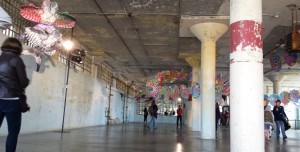
The space, the “New Industries Building” served as a vast laundry room where inmates manufactured army uniforms under close guard and for a pittance (their work organized by a company that still continues to do this in US prisons to this day).
@ Large was created under the sponsorship of the FOR-SITE Foundation led by Cheryl Haines in collaboration with the National Park Service and the Golden Gate Conservancy. She thought of the idea of an installation on Alcatraz, then happened to meet Ai Weiwei in China, just after his release in 2011. Ai Weiwei wanted to broadcast injustice inside and outside China: it was a perfect fit. But it took a lot of diplomacy to gain support: it is the first time any art event has been held at Alcatraz.
Near the dragon are “bird kites” that reference countries holding political prisoners. These threatening, unmovable birds emphasize the contradiction of their “detention” with the freedom of the many birds on Alcatraz Island, now designated as a bird sanctuary.
Ironically, the kites are titled “With Wind,” suggesting what would happen if they were able to fly, and underscoring its absence.
Some of the kites that form the dragon have quotes from human rights activists who are included in “Trace,” installed in the second vast room of this former industrial factory.
From looking up at kites, we look down to the floor at portraits of 176 people imprisoned for political beliefs in 33 countries. The portraits are constructed in small Legos, with various sizes and colors, meticulously composed by means of grids. They are arranged in a pattern set in a white (Lego) ground; we can see them as individuals, linked by a common grid of restraint.
Ai Weiwei figured it all out from China. He is also an architect, so he was able to work with models and dimensions. He understood and experienced the confinement of his detention cell (another work seen in Venice and in a travelling retrospective recreated the exact dimensions of his detention cell). His work has frequently addressed our relationship to architectural spaces and its components.
Before I went I was dubious about the use of Lego, but actually, the digitized portraits perfectly express the barely visible condition of most of these prisoners. Volunteers in San Francisco matched the legos to templates, a demanding and complex process. Five large segments were put together over three weeks by 90 volunteers following patterns (does it echo the virtual slave labor that took place in this building?).
A few of these portraits honor past heroes like Nelson Mandela and Martin Luther King. At the very front are Edward Snowden and John Kiriakou.
The 38 Chinese prisoners form a single huge segment on the floor, the only group that was assembled in China. As we move through the vast room we look at faces and names.
(We can’t walk on the Legos, so we see them from an angle, again appropriate for these disappeared detainees). In a book on a pedestal, as well as online we can read each of their stories.
The artist worked in collaboration with Amnesty International to select the names to include, and of course these are only a fraction of who might have been included.
For example, for the United States, there are only six names. Where is Mumia Abu Jamail? Why only one prisoner from Guantanamo, Shaker Aamer. I expected to see Mahamedou Ould Slahi. There are in fact still 122 prisoners at Guantanamo, 56 of whom have already been cleared for release. Those prisoners, like many of the political prisoners in @Large are all victims of a profound violation of human rights and falsely accused of actions which they did not commit.
We view a third installation in the same immense building, “Refraction” from a narrow passageway looking down through broken windows. Originally, armed guards stood here watching prisoners work; we take their position. “Refraction” suggests the wing of a huge downed bird. Made from giant solar panels used in Tibet as solar cookers, it again represents immobility. On top of some of the panels are teapots or small pans referring to their original use, as well as perhaps the human spirit rising above adversity.
From the New Industries building, we descended down the hill to Cellblock A, part of the public tour of Alcatraz. Ai Weiwei had to argue to get permission to use it.
Inside these old fashioned and crumbling cells built before Alcatraz was a federal prison, we sit on a small stool in each of twelve cells and listen to “Stay Tuned,” songs, poetry and speeches by people or groups, imprisoned for their creative expressions. They speak in their native languages. Outside the cell is an English translation. It includes familiar names such as Fela, Pussy Riot, and Martin Luther King, obviously making the statement accessible to the general public who have no idea that @Large exists, and have come simply for the standard Alcatraz tour. It is a haunting emotional experience.
Even more penetrating are two sound installations, “Illumination”, in the psychiatric isolation units of the adjacent prison hospital. Buddhist monks and Hopi Indians (who were imprisoned at Alcatraz for refusing to send their children to government boarding schools) chant, separately, in windowless spaces.
In the rest of the hospital, another installation, “Blossom,” consists of hundreds of white porcelain flowers which fill derelict sinks, toilets and bathtubs almost to over flowing. As one of the art guides said, “Porcelain is strong, but fragile, like free speech”. Putting them into plumbing fixtures suggests they could be flushed away at any time. The flowers also reference the artist’s father’s own experience in the 100 Flowers Campaign in China, when intellectuals were invited to critique Mao, only to be sent into exile. Ai Weiwei’s father was a famous poet, who was sent to clean toilets in the Gobi desert.
The final installation “Yours Truly” appropriately placed in the dining hall of the prison, offers an opportunity to correspond with political prisoners: post cards are pre addressed to the people featured in “Trace.” We can tell them directly that we are thinking of them. It is surprisingly moving to reach out personally to those imprisoned, and know that even this simple act of communication can break through the devastating isolation of those lost in a prison or detention system.
Set inside the infamous Alcatraz prison, in the middle of the overwhelmingly beautiful San Francisco Bay, with cormorants and gulls flying around us, intensifies the experience of @Large as it calls attention to the huge injustice of politically motivated imprisonment worldwide.
Alcatraz itself had its share of political prisoners as well. In addition to the Hopi, conscientious objectors from World War I went there. Alcatraz is mainly famous for the prisoners who arrived after it became a federal prison for the “worst of the worst” in 1933.That is what the tour seems to emphasize.
Ai Weiwei, with the help of an unusual coalition of public and private organizations, has pulled off an enormous coup in @Large. The installation layers image and symbol, fact and metaphor, freedom and detention; it includes history and the larger contexts of imprisonment and human rights. The media of kites, and Lego and porcelain, as well as music, poetry and chants, underscore the fragility of freedom itself. Ai Weiwei has had his passport revoked by the Chinese government, but his outspoken protest of unjust imprisonment and detention and his stand for freedom cannot be contained.
“Any artist who isn’t an activist is a dead artist.” Ai Weiwei
This entry was posted on May 18, 2015 and is filed under Art and Activism, Contemporary Art, Detained, dragons, global justice, Uncategorized.

